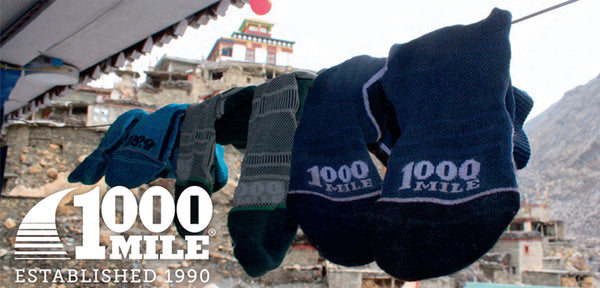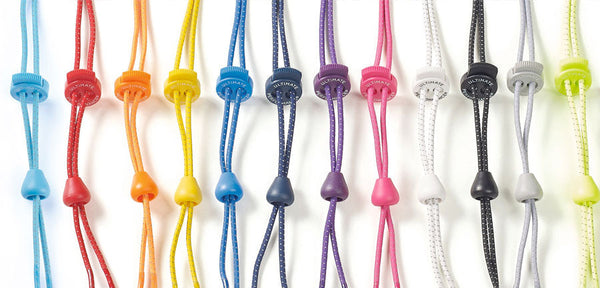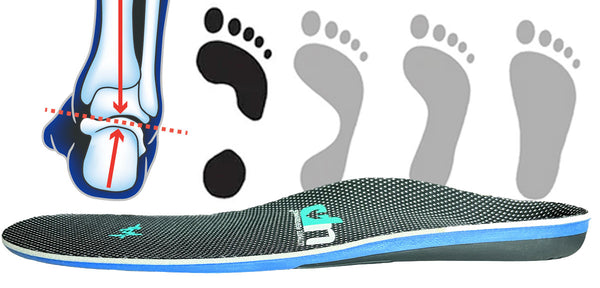
1000 Mile Sock Technology Explained
1000 Mile socks are built to go further, last longer, and keep your feet healthy. The secret lies in the advanced fibres we use across th...
Free delivery over £35
Women's Trek Repreve Single Layer Twin Pack - 2271
Men's Trek Repreve Single Layer Twin Pack - 2271
Women's All Terrain Repreve Sock - 1951
Men's All Terrain Repreve Sock - 1951
They differ from standard socks in several key ways to enhance performance, comfort, and protection for runners. Here are some of the primary differences:
Our socks include moisture-wicking materials or blends that draw sweat away from the skin. This is crucial when trail running, because wet feet usually lead to blisters.
Standard Socks are often made from cotton or other basic materials that do not wick moisture as effectively. Cotton retains moisture, which can lead to blisters and discomfort during long runs.
Many of our Trail Running Socks have extra cushioning in key areas. For example, in the heel, toes, and underfoot. This absorbs shock and protects against the impact of uneven surfaces.
Standard Socks have minimal or no cushioning, which is more suited for everyday wear or light activities, but not for the rigors of trail running.
Trail Running Socks: Built to be more durable, with reinforced stitching and materials that withstand the friction and pressure of running on rugged terrain.
Standard Socks are not designed for high-impact activities and may wear out faster.
Trail Running Socks: Designed to offer a snug fit that reduces the risk of bunching or slipping inside the shoe, which can cause blisters. Some also provide mild compression to improve blood flow and reduce muscle fatigue.
Standard Socks: Typically have a more relaxed fit, which can lead to movement inside the shoe, increasing the risk of blisters during intense activities.
Our Trail Running and Walking Socks vary in height, including ankle, crew, and over-the-calf. The choice often depends on the environment; for example, higher socks are more suitable for boots, and give added protection against debris or plants along the trail.
Standard Socks come in basic styles like ankle or crew length, without consideration for specific outdoor protection needs.
Trail Socks are temperature-regulating, keeping feet warm in cold conditions and cool in warm conditions. This is particularly important for trail runners who may experience varying temperatures during a single run.
Standard socks lack these advanced temperature-regulating properties.
Trail Running Socks: Many are designed with anti-blister technology, such as seamless construction, double layers, or special fibers that reduce friction.
Standard Socks: Not typically designed with anti-blister features, making them less suitable for long or intense activities.

1000 Mile socks are built to go further, last longer, and keep your feet healthy. The secret lies in the advanced fibres we use across th...

Knowing how to use elastic laces properly improves comfort and convenience when running or participating in sports. Elastic laces stretch...

Running with varicos veins is a common concern for many, especially those who also spend a lot of time on their feet. While running itsel...

Most runners have dealt with injuries, but being hit by a car can cause the most severe damage. Fractures and head injuries may not only ...

Choosing the right insoles for overpronation is important for providing proper support and comfort to your feet. What is Overpronation? ...

The best insoles for supination have maximum cushioning. If you supinate then your feet tend to roll out placing more load on the outside...